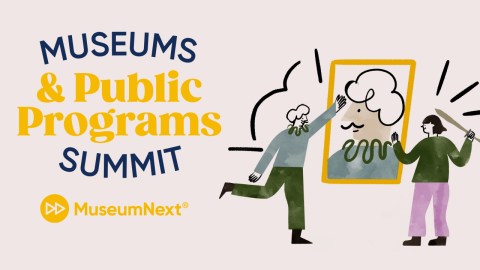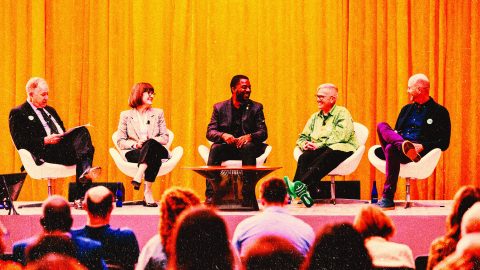CEO Betty Brewer asked Jim Croft to think about changes he has seen over his 30+ years at The Field Museum as he prepared to leave the museum and move full time into the work of academia.
You are one of a handful of people who formed the Committee on Museum Administration and Finance – then a new Professional Standing Committee of the American Alliance of Museums (now the Leadership and Management Network). Can you recall the thought process that went into this? What was the group hoping to accomplish for the field?
In the late-1980s, AAM brought together a group of museum finance officers to discuss the Current Issues in Museum Financial Management. There was a special focus during the seminar on the exposure draft of FAS 116 (Accounting for Contributions Received and Contributions Made). This would result in significant changes in accounting practices for the museum field and Ed Able (then CEO of AAM) wanted to hear from those who would have to implement any changes.
The seminar gave me the opportunity to make a passionate plea to Ed – if AAM wanted the involvement of finance people, AAM needed to give more consideration to their needs. Under ‘turnabout being fair play,’ Ed asked me to chair a task force on the issue. The task force initially included myself, Tom Costello, Tom Berger, Marge Marek, Sally Zinno, Bob Nauert, and Jane Piasecki. Within a period of about three years, the task force became a new Standing Professional Committee – the Committee on Museum Administration and Finance (COMAF) – for which I served as Chair for two terms.
 The purpose was to make the American Alliance of Museums more accessible to those with financial responsibilities. COMAF created a track for finance officers at the annual meeting. However, our most significant program was a series of fall seminars (Current Issues in Museum Management). With some significant sponsorship, we were able to offer strong and focused programming that attracted 75 – 100 museum executives each year. Sessions were designed to assist chief financial officers as well as executives from smaller institutions who had multiple responsibilities that included financial management. Our founding principal for the Seminar was fellowship and networking. And we moved the seminars to various locations in the country to make them accessible to as many as possible.
The purpose was to make the American Alliance of Museums more accessible to those with financial responsibilities. COMAF created a track for finance officers at the annual meeting. However, our most significant program was a series of fall seminars (Current Issues in Museum Management). With some significant sponsorship, we were able to offer strong and focused programming that attracted 75 – 100 museum executives each year. Sessions were designed to assist chief financial officers as well as executives from smaller institutions who had multiple responsibilities that included financial management. Our founding principal for the Seminar was fellowship and networking. And we moved the seminars to various locations in the country to make them accessible to as many as possible.
As some of the founding members began to move around and leave the field, it see
med the seminars weren’t offered as regularly. I understand changes in AAM programming, especially the addition of webinars, may have made it difficult for the seminar to continue.You have been with The Field for quite a long time (how many years?). How do you believe the museum field has changed over those years; or do you believe there have even been any significant changes?
I was recruited by The Field Museum thirty-one years ago as the chief financial officer. When I retired from the museum at the end of 2015, my title was Executive Vice President and Chief Financial Officer. In between those titles, I had quite an array of responsibilities. I always had responsibility for finance and facilities. At various times I also ran the retail stores, security, and special events. For a time I had responsibility for Human Resources. I served as Chief Development Officer for five years for the capital campaign that allowed us to build a new, phenomenal Collections Resource Center.
As for changes in the museum field, I believe these are best reflected in my dissertation research, completed in 2004. Museums had undergone significant facilities and programmatic growth as a benefit of the very strong economy of the 1990s. However, a downturn at the opening of the 21st century led to the challenges of being able to maintain new fixed costs as well as the programs at museums’ mission cores. What I found was that the entire museum community changed during these periods in the amount of professionalism in the administrative/management side. To achieve what was achieved and to meet the next set of challenges required a new level of training; demands were greater.
Specifically, the role of the finance officer began to change. There was a time when the person with financial responsibility for the institution was an office manager or perhaps a bookkeeper, if you were lucky. And that’s even if there was someone other than the director managing finances. Often museum directors, generally with little training in accounting or finance, were required to assemble budgets and financial statements. By the time this study was completed, museum finance officers had backgrounds in accounting; some were CPAs or had MBA degrees. It was definitely a more professional atmosphere.
As demands on finance officers and executive officers continue to grow (such as revisions in IRS Form 990 and best practices of Sarbanes-Oxley often brought to the board table by corporate trustees), the need for increased professional management skills will continue. There is a constant need to continue one’s education in these areas.
In your time at The Field, is there something that particularly stands out in which you take the greatest satisfaction?
With over thirty years and wide areas of responsibility, there are a number of special projects and challenges that stand out for me. Of course, I really enjoy the finance side of things so those components tend to take precedence. A few of these include:
- The challenges we faced in the purchase of Sue – the largest, most complete T. rex skeleton ever discovered.
- The building of our 200,000 square foot Collections Resource Center, one of the most premier such facilities in the world.
- The successful navigation of several recessions.
- Restructuring financial planning for The Field – improving the entire concept of how to plan financially; how to structure and improve the whole budgeting process; providing more flow to the work that is done.
That last item is really important to me. The museum now has a five-year financial planning process that strengthens and improves the ability to sustain and deliver on mission.
Can you share with us what prompted your retirement from the museum and your move to academia?
I have been teaching in the Kellogg School of Management’s Center for Nonprofit Management at Northwestern University for about seven years. Recently things just came together that made it the right time to leave the museum and focus on the new opportunities and challenges being offered at Kellogg. I have been asked to create some new programs especially designed for nonprofit CFOs. Specifically, I am to reach out to the cultural community as Kellogg has made few in-roads into this sector. I am looking forward to these new opportunities – conducting research for new course, developing some case studies, possibly creating some custom programs for the cultural community.
In addition, last fall I developed a couple of new on-line classes for the University of Nebraska’s MBA program: Nonprofit Management and Nonprofit Finance. I want to continue teaching these classes as well as the higher education management and finance classes I currently teach in the College of Education at McKendree University.
What didn’t I ask that you would really like to share with your museum colleagues?
Although I have left the physical confines of the museum, I have not left the field. Simply put, I want to be available to help people. By bringing my experience in museums and academics together, I want to help people manage better, in order to serve their publics better.
Reporters note: After all of his work for the Kellogg Center, University of Nebraska, and McKendree University, Jim Croft uses his “spare” time for his new business: JWC Consulting Group, Inc. As he puts it, “I’m not the brightest guy, but I have lots of experience.” Trust me friends, this is one very bright guy. He can be reached at: jcroft@jwccg.com.
Betty Brewer serves as President and CEO of Minnetrista, a 40-acre site with a museum, historic homes and gardens. She has held this position since 2005. Ms. Brewer has served the museum field for 30 years, including being a past chair of the Leadership and Management Professional Network and presenting sessions at national, regional, and state conferences and webinars.








